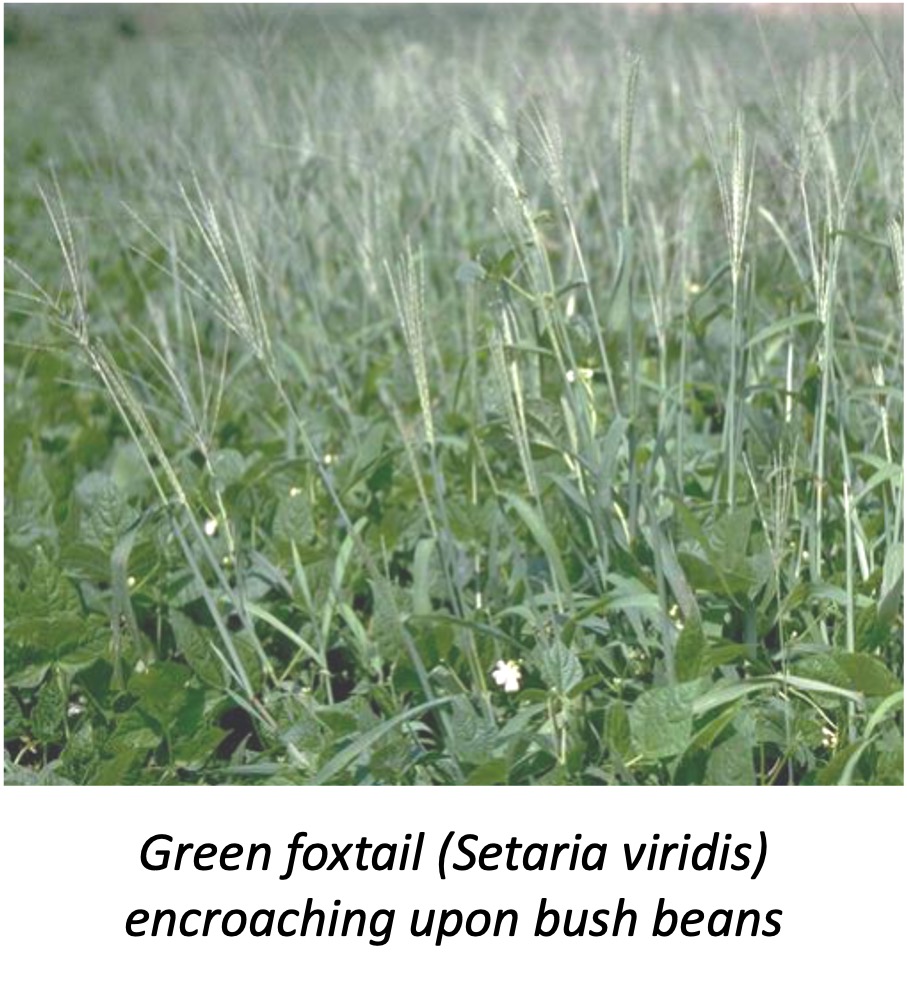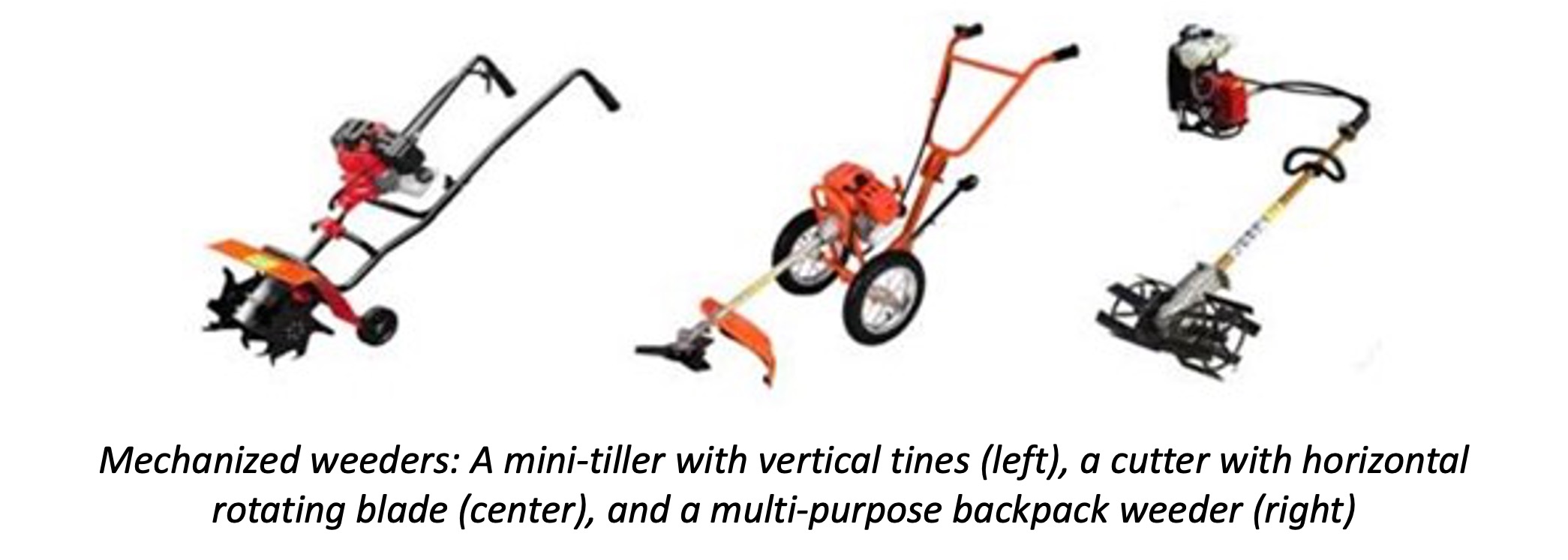Mechanical and Chemical Weed Management
Summary
Common bean is a relatively weak competitor with weeds and when overgrown by them yield losses from 60 to 100% can occur. Encroachment of weeds causes inefficient use of fertilizer inputs and may harbor pests and diseases, or exude chemicals that have a negative impact upon bean root systems (allelopathy). Tall-growing weeds shade the crop, making stems weak and easily lodged by wind or rain. Effective weed control is key to achieve high levels of bean yield and climate resilience, yet manual removal from fields involves drudgery and expense. Chemical and mechanical techniques are available that reduce the costs and keep bean crops free from weeds throughout the growing season. These approaches give rise to greater productivity, nutritional quality and palatability of common beans in comparison to manual removal methods in ways that increase profit margins.
About the Solution
Weed encroachment has particularly negative effects on common bean between the time of planting up to canopy closure. The use of chemical and mechanical techniques removes weeds that would otherwise compete for light, nutrients and moisture thereby improving the development of roots and shoots. Pre-emergence control of weeds is possible by applying herbicides shortly before or at the time of planting beans which ensures bean crops do not become overgrown at early growth stages. Post-emergent control between seedling and pod filling stages can be accomplished with herbicides, weeders or a mix thereof. Farmers are able to control grassy weeds inside bean stands with common types of herbicides whereas for broadleaf weeds they need to apply selective herbicides that will not harm the growth of the legume crop. Motorized equipment that greatly reduces labor requirements compared to hand methods are available for controlling weeds but are limited to evenly planted rows and the row spacing must be adjusted to available equipment to avoid damage to the crop.
Weed management with herbicides and weeders is suitable for all types of bean growing areas in Sub-Saharan Africa. The time saving and yield gains that are achieved by these approaches strongly resonate with small-scale farmer communities where availability of labor for manual removal is limited. Herbicides are available for most weed species that occur in SSA and their application is not restricted by soil conditions. Motorized weeding units of various sizes and configuration match the technical and financial capacity of small-scale and commercial farmers, however they are not appropriate when the foliage of beans has fully developed and on fields with a steep slope or during times of soil wetting as this reduces access and workability.
There is a large assortment of pre- and post-emergence herbicides for weed management in pure stands of common bean, such as Catapult® 480SL, Hotline® 450 SC, Bentagran Top® 240EC, and Forester® 150 EC. For maize-bean intercrops the pre-emergence herbicide DUAL GOLD® 960 EC offers a solution to avoid encroachment by grassy and broadleaf weeds. Before application to fields, the chemical agents must be diluted with clean water, and often adjuvants are added to pre-made formulations or spray tanks for enhancing herbicidal activity and adhesion. Equipment for weeding row-planted crops either cut them at the base or bury weeds through shallow tillage. These weeders can be fitted onto walking tractors and backpack kits for greater maneuverability.
Chemical weed control management should be prioritized on fields with the highest level of weed encroachment and the more difficult to control weeds to maximize returns, with the intention to steadily decrease weed seed banks over time. Herbicide sprays should take place one week after tillage or latest before the bean crop is 10 cm in height. Soils should be moist, not too wet or too dry, when fields are sprayed thus requiring the time of application to be synchronized with rainfall and time of day. Protective clothing should be worn by workers that apply the herbicides to avoid contact with chemical agents. Use of motorized weeders requires that bean crops are planted in evenly spaced lines so the work can be done at pace without damaging the stems or roots. Depending on the level of infestation and rate of canopy growth, farmers are required to use power weeders once or twice during a season. The equipment can be operated by only one person, but to cover larger areas two or more operators working in conjunction are needed.
Commercialization
Commercially available
Solution Images
Institutions



